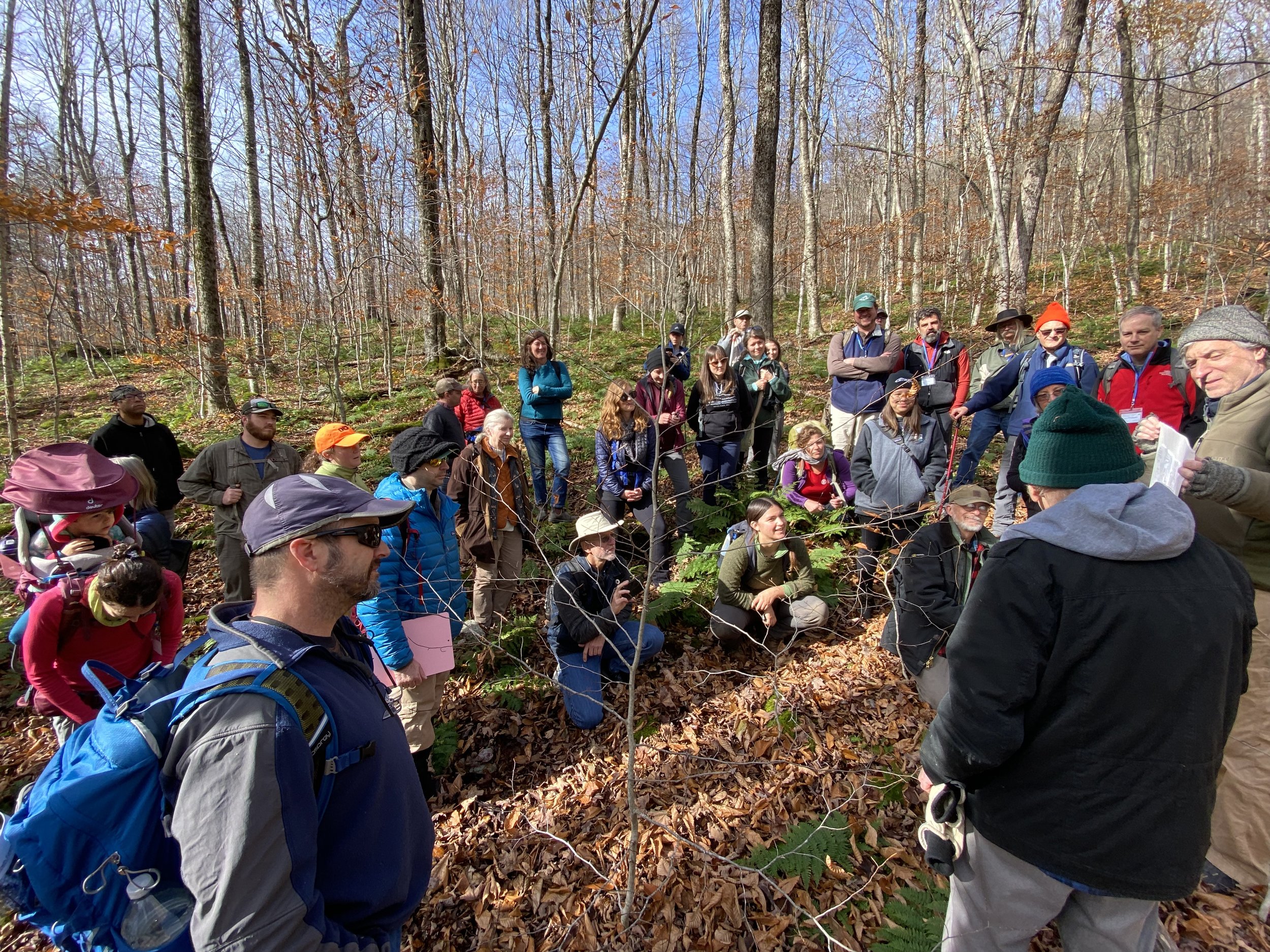
Mt. Hemlock & Biscuit Brook Old Growth Stands - Big Indian Wilderness Area
Big Indian Wilderness is a tract of 33,860 acres protected and managed by the Department of Environmental Conservation (DEC) as part of New York State’s Catskill Forest Preserve. It is a part of the homelands of the Munsee Lenape peoples. Based on mapping by forest historian Michael Kudish, 22,280 acres (66%) are “first growth” or primary forest which has not been altered by human activities including logging, bark-peeling, agriculture, burning, charcoal making or mining of mineral resources.
Although the “first growth” forest is extensive within this tract, stands which can be properly described as “old growth” are limited to areas below the 3,000-foot elevation which are sheltered from the most severe climatic conditions and where growing conditions including soil depth, drainage, moisture availability and nutrient status are optimum. Forest stands with large diameter trees of old growth form, characteristic epiphytic lichens and mosses and generally high biodiversity have been documented at several locations within the management unit. These include
1) a stand on the southwest- facing slope of Hemlock Mountain, accessible from the Slide Mountain parking area (which is immediately across the road) and
2) two stands, Lower and Upper Biscuit Brook, which are accessible by using the blue-blazed Pine Hill – West Branch Trail starting from the Biscuit Brook parking area on County Route 47.
The Hemlock Mountain and Upper Biscuit Brook Stands are typical of the northern hardwoods hemlock association with sugar maple, yellow birch and hemlock dominant in the canopy and with beech persisting in the understory in the form of small diseased trees or sprouts from formerly larger trees killed off by the beech-bark disease. The Upper Biscuit Brook stand has many large diameter (30-inches and greater) hardwood trees with classic old growth forms and an abundance of old growth indicator epiphytes including the lichen Lobaria pulmonaria and L. quercizans, the moss, Nekera pennata and the leafy liverwort, Porella platyphyloidea.
The Lower Biscuit Brook stand exhibits characteristics of rich mesic forest with a greater abundance of calcium-loving species including trees such as white ash, basswood and hop hornbeam and a large variety of spring ephemeral wildflowers.






View All Network Forests in the State of New York
View All Network Forests in the U.S.
View All Forest Designations
